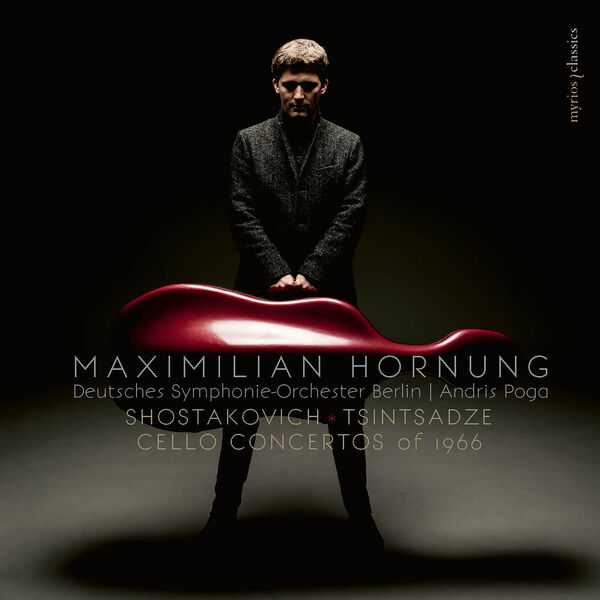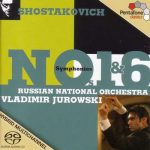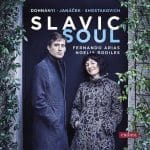

Composer: Dmitri Shostakovich, Sulkhan Tsintsadze
Performer: Maximilian Hornung
Orchestra: Deutsches Symphonie-Orchester Berlin
Conductor: Andris Poga
Format: FLAC (tracks)
Label: Myrios
Catalogue: MYR023
Release: 2018
Size: 1.92 GB
Recovery: +3%
Scan: cover
Tsintsadze: Cello Concerto No. 2 in 5 Episodes
01. Episode I. Andante sostenuto
02. Episode II. Andante molto
03. Episode III. Cadenza
04. Episode IV. Finale. Presto
05. Episode V. Coda. Andante molto
Shostakovich: Cello Concerto No. 2 in G minor, Op. 126
06. I. Largo
07. II. Allegretto
08. III. Allegretto
We are in the year 1966, in the Soviet Union. While Shostakovich is enjoying the success of the world première of his Second Cello Concerto, the Georgian composer Sulkhan Tsintsadze is putting the finishing touches on his own new work. In their respective concertos, these two composers draw their own psychogram: a sombre landscape intermittently illuminated by rays of light, brightened up with a few prudent dabs of colour here and there.
German shooting star cellist Maximilian Hornung releases his first album on the myrios classics label. Born 1986 in Augsburg, Hornung studied with David Geringas, Thomas Grossenbacher and Eldar Issakadze, to whom he dedicated the album. It was Issakadze who introduced him to the fascinating music of Sulkhan Tsintsadze, one of the most celebrated composers of Georgia.
The musical link of Tsintsadze’s Second Cello Concerto to the late work of his Soviet colleague and contemporary, Dmitri Shostakovich is at the core of this gloomy, yet enchanting album. The Deutsches Symphonie-Orchester Berlin under the baton of the latvian conductor Andris Poga provides perfect musical partnership. The disc, recorded in Hi-Res DXD sound, comes in a beautiful PocketPac with a 40-pages booklet that includes an introduction to the works by the Shostakovich biographer and cellist Elizabeth Wilson, who, as a student of Mstislav Rostropovich, attended the premiere performance of Shostakovich’s Second Cello Concerto in Moscow 1966.
Two “Soviet” concertos for cello and orchestra, both written in 1966, that is the idea behind this recording of cellist Maximilian Hornung. Of course, the most famous of the two is and remains Shostakovich’s Second Concerto, written for and premiered by Rostropovich. Less famous, except perhaps in Georgia, is the Georgian composer Sulkhan Tsintsadze (1925-1991), himself a renowned virtuoso cellist, who composed an impressive number of chamber music, concertos, symphonies, operas, oratorios, completely ignored by the rest of the world, what a pity. Tsintsadze, as might be thought from a “regional” Soviet composer, often borrows from the folklore of his country, but this is in no way a limitation or a specialization, no more than the way Khatchaturian would sometimes borrow from Armenia. Here is his Concerto No. 2 in five episodes, in which Tsintsadze is certainly quite indebted to Shostakovich, but also to Prokofiev undoubtedly, even to Khatchaturian here and there. The instrumental language is both brilliant and idiomatic. The contrast between his concerto and that of Shostakovich – keeping in mind that they both date from the same year – is striking. The cellist Maximilian Hornung has already performed as a soloist with the Bavarian Radio Orchestra, the Tonhalle Zurich, the London Philharmonic, the Orchestre National de France, the London Philharmonia; in short, many of the most prestigious orchestras in the world.



